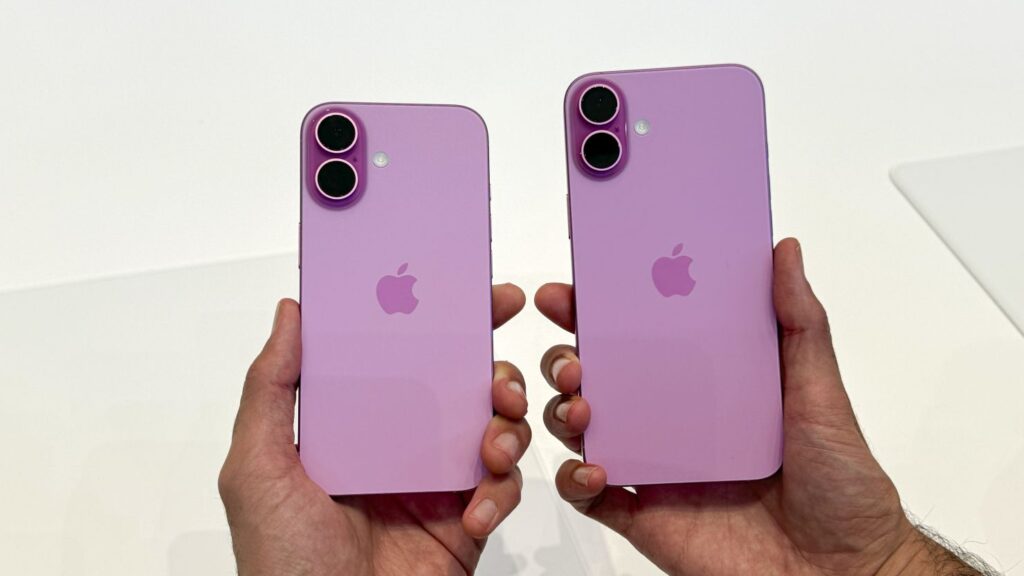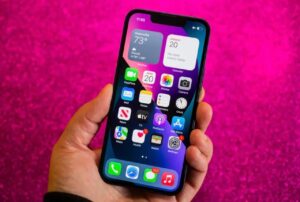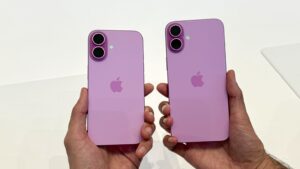
The debate over whether the iPhone 16 Pro is untapped potential or simply unfinished goes beyond mere skepticism. Apple’s latest flagship, available in both standard and Max versions, boasts the fastest processors, top-tier photography, and stunning displays. However, when it comes to AI, the software feels like it hasn’t fully caught up with the hardware. This means that the iPhone 16 Pro you’re shelling out $999 or more for today may not yet reflect Apple’s complete vision for the device.
As with recent models, Apple’s approach with the iPhone 16 Pro is more about refinement than revolution. The frame is crafted from titanium, featuring a smooth, micro-blasted finish, and is sandwiched between two Ceramic Shield glass panels. Apple claims this is twice as durable as competitors’ materials, though in my experience, while Ceramic Shield handles drops well, it tends to accumulate micro-scratches more easily.
The display is slightly larger — 6.3 inches on the iPhone 16 Pro and 6.9 inches on the iPhone 16 Pro Max — with slimmer bezels, though you’d need to compare this generation side-by-side with its predecessor to notice the difference. While the phones themselves are marginally bigger, even the Max model doesn’t feel significantly more cumbersome in hand compared to last year’s version, at least for those with average-sized hands.

A more noticeable improvement is in how dim the new screen can go, reaching as low as 1 nit of brightness. This is a game changer for late-night scrolling in dark rooms when you don’t want to disturb others. You can adjust the brightness through iOS 18’s revamped Control Center, which now divides settings into three sections: Favorites, Music, and Wireless, offering more intuitive control.
AI is arriving (for better or worse)

Powered by the A18 Pro chip, the iPhone 16 Pro delivers the expected performance boost, with Apple touting it as faster, more efficient, and better suited for machine learning tasks essential for AI. In my experience, it feels slightly quicker when switching between apps or browsing in Safari, but if you’re coming from the iPhone 15 Pro, the difference won’t be dramatic. The real, noticeable improvements might not materialize until Apple rolls out its full suite of Apple Intelligence features later this year and into 2025.
To be honest, many of the AI-driven features that iOS — and other platforms like Android, macOS, and Windows — are increasingly incorporating don’t particularly appeal to me. Sure, it’s nice to be able to automatically remove an unwanted fire hydrant or pedestrian from a photo, but I’m perfectly capable of writing my own emails and managing my own tone. I’m also not keen on having ChatGPT, with its tendency to hallucinate and its environmental impact, meddling with my data.
Apple deserves some praise for keeping many of its Apple Intelligence features optional. You don’t have to use ChatGPT or any of the other AI tools, and you can easily ignore them if you choose. While some have criticized the iPhone 16 for launching without many of the AI capabilities Apple is heavily marketing — features that will arrive in future iOS updates — I’ve actually enjoyed experiencing the phone as it is now, before it gets too heavily infused with AI.
Better cameras, due to Fusion

What we have with the iPhone 16 Pro today is a polished enhancement of the familiar “Pro” experience. This is especially evident in the camera, where new hardware and software come together to make photography both easier and more versatile.
A major update is the leveling of the playing field between the Pro and Pro Max models: the 5x optical zoom — featuring the innovative tetraprism lens — is no longer exclusive to the larger phone. For 2024, both models feature a 48MP primary Fusion camera that captures photos at either 24MP or 48MP. This camera comes with a new sensor and improved autofocus, promising faster image processing and more accurate subject tracking. When you tap the 2x zoom, Apple provides a 12MP “optical-quality” 48mm equivalent shot by using the center portion of the Fusion camera’s sensor.
The ultra-wide camera has also been upgraded to 48MP, with enhancements in focus and detail, and it excels in macro photography, allowing shots from as close as 2cm. Additionally, users can now capture macros in ProRAW or HEIF Max for even greater detail.
Camera Control is more than simply a shutter release button

The iPhone 16 Pro now offers a focal range from 13mm to 120mm, with a new hardware feature to help navigate that span. The Camera Control, a hybrid shutter button and touch-sensitive slider, is located on the lower right edge of the phone. A quick press launches your preferred camera app, while pressing it again captures a photo.
The Camera Control can differentiate between light and full presses. Although Apple plans to introduce a half-press function to lock focus — similar to traditional cameras — for now, a light double-tap brings up a mini-menu for adjusting settings like exposure, zoom, cameras, depth of field, tone, and Photographic Styles. You can swipe to make selections, and then lightly press and swipe again to fine-tune each setting.

Getting the pressure just right can take a little practice, reminiscent of the trackpoint nub on ThinkPad keyboards. You can adjust the button’s sensitivity and behavior in the settings menu. I did find that I needed to change my grip slightly so that my finger landed on the button naturally, and I wished it were positioned a bit lower on the phone. That said, it’s a handy feature, especially since holding it down allows you to capture up to 4K 60fps Dolby Vision video. Third-party camera apps can also utilize the Camera Control, making it a versatile tool.
Still excellent photographs, but taste is a matter of opinion
At the risk of sounding repetitive, the changes in picture quality over the previous-gen iPhone aren’t exactly night and day. The iPhone 15 Pro was capable of great photography, and the same holds true for the iPhone 16 Pro.

Where in earlier iterations, Apple took a more light-handed touch to image processing compared to, say, the “house style” of Samsung’s Galaxy and Google’s Pixel, in recent years and with the increasing complexity of the Fusion pipeline, there’s been a more distinct hand in the tone of what ends up in your camera roll.
Whether you like that or not is subjective. The multiple steps of processing, from what the sensor sees through to what’s shown on-screen, are doing a lot to lift shadows, tame highlights, boost colors, and finagle contrast and dynamic range. Sometimes the result of that is a near-magical image where vastly different lighting conditions are somehow evened out. Other times, photos can look a little flat and overly harmonized, in the name of achieving that balance.
You could always dip into the gallery later, and tweak images to your liking. For 2024’s iPhones, though, if you’re not a fan of how Apple chooses to process its images, the newly-supercharged Photographic Styles make those tweaks (and more) possible in the same moment as shooting.
Greater battery life, unchanged high price tag
If cameras are what helps sell new phones, battery life is what can make for a daily frustration. Happily there’s a physically-larger battery inside both sizes of iPhone 16 Pro; it’s still early days, but I’ve found the percentage on the iPhone 16 Pro Max definitely drops slower than that of the iPhone 15 Pro Max. For charging, there’s now up to 25W MagSafe support; the iPhone 16 Pro’s USB-C port can still supply up to 4.5W to other devices, useful if you want to top up your AirPods 4.
As we’ve seen before, a lot of the flagship iPhone experience is about future-proofing. Features like Wi-Fi 7 multilink support probably aren’t, for most people, going to make much of a day-to-day difference right now. Yet, like the speedier A18 chipset, they’re ready for upcoming hardware and software upgrades that should leave the iPhone 16 Pro still feeling fresh.
That’s good, since Apple hasn’t made its Pro phones any cheaper this time around. You’ll pay from $999 for an iPhone 16 Pro with 128GB of storage, or from $1,199 for the Max version with 256GB. Splash out on the 1TB iPhone 16 Pro Max, and you’re looking at $1,599.




